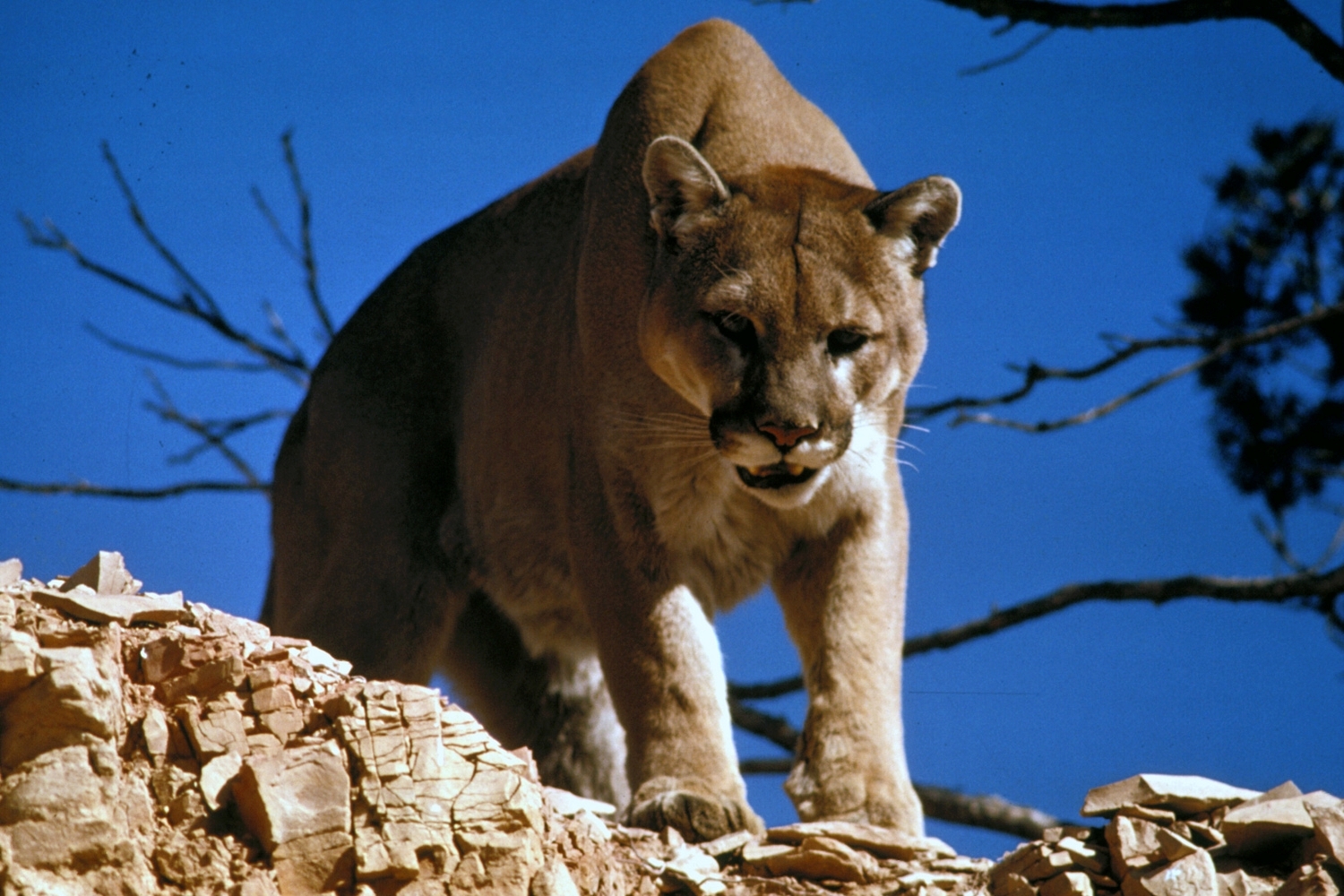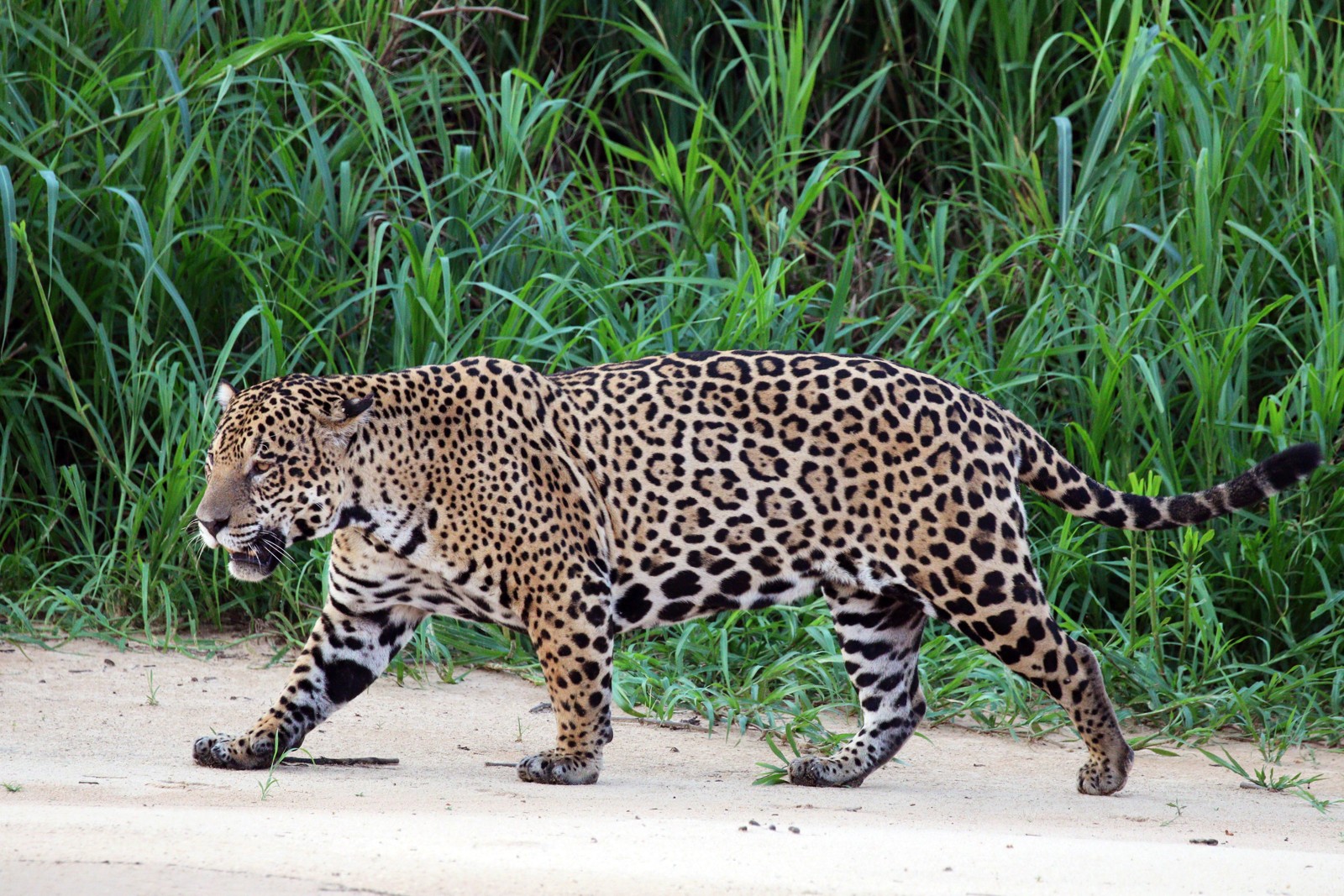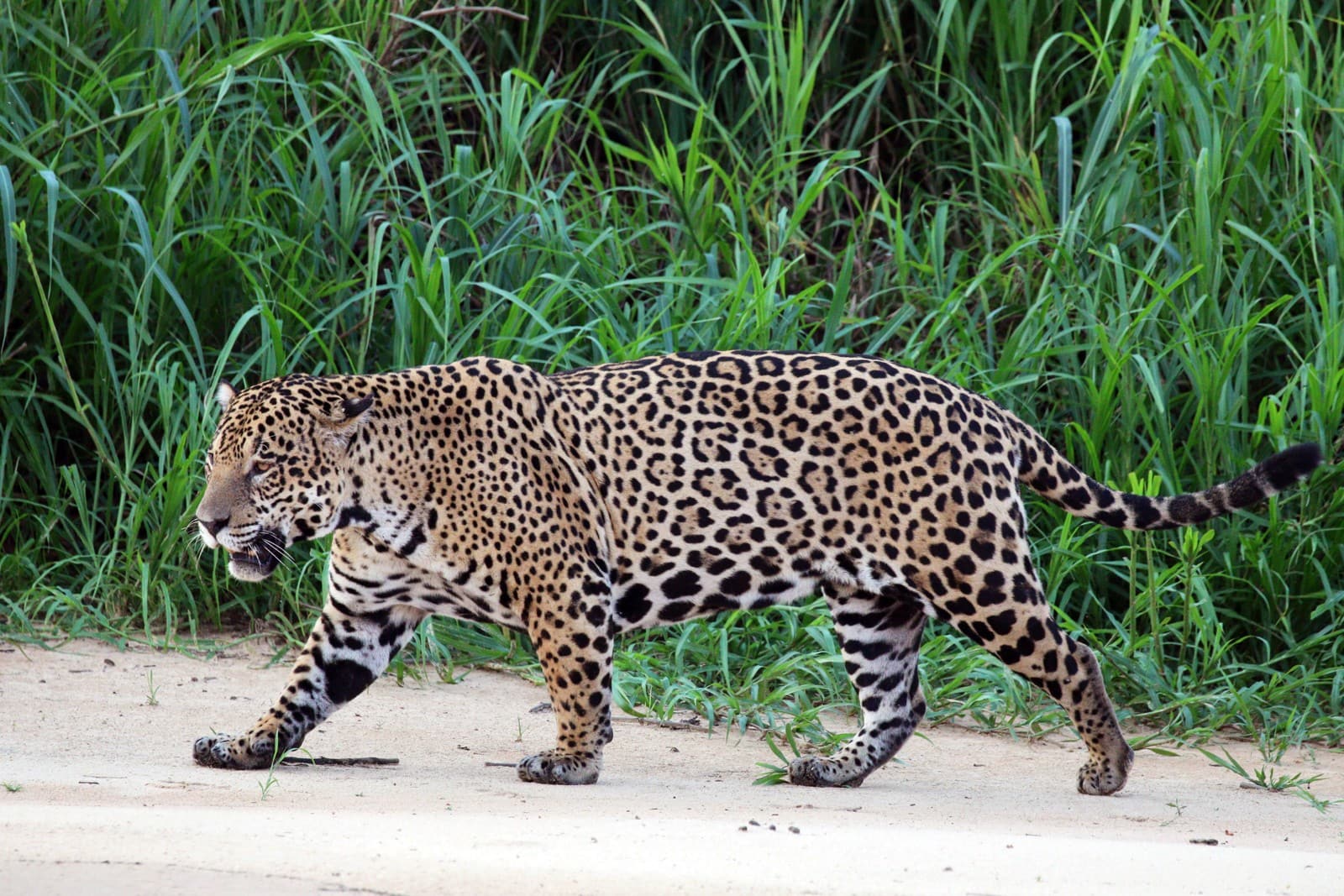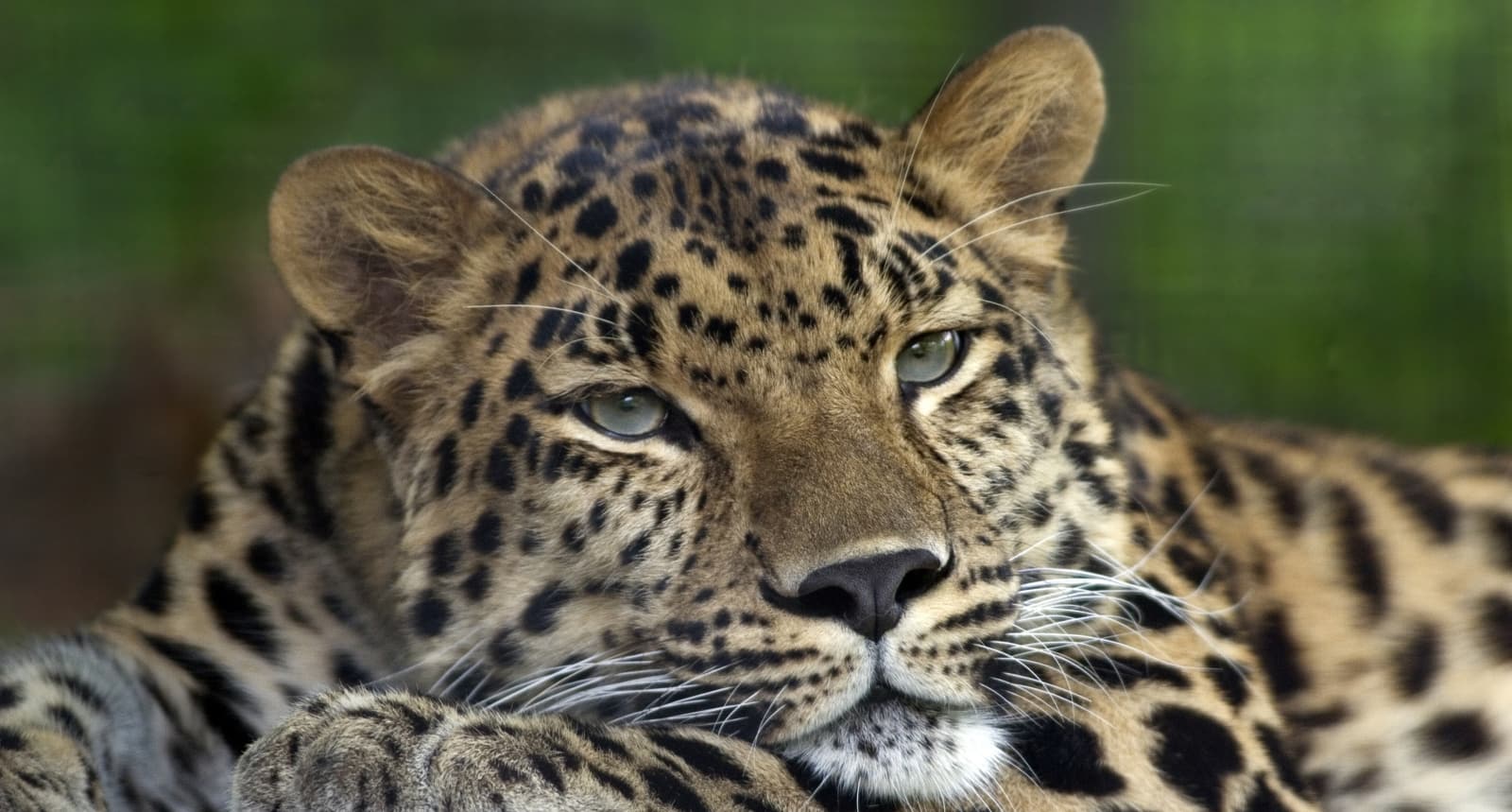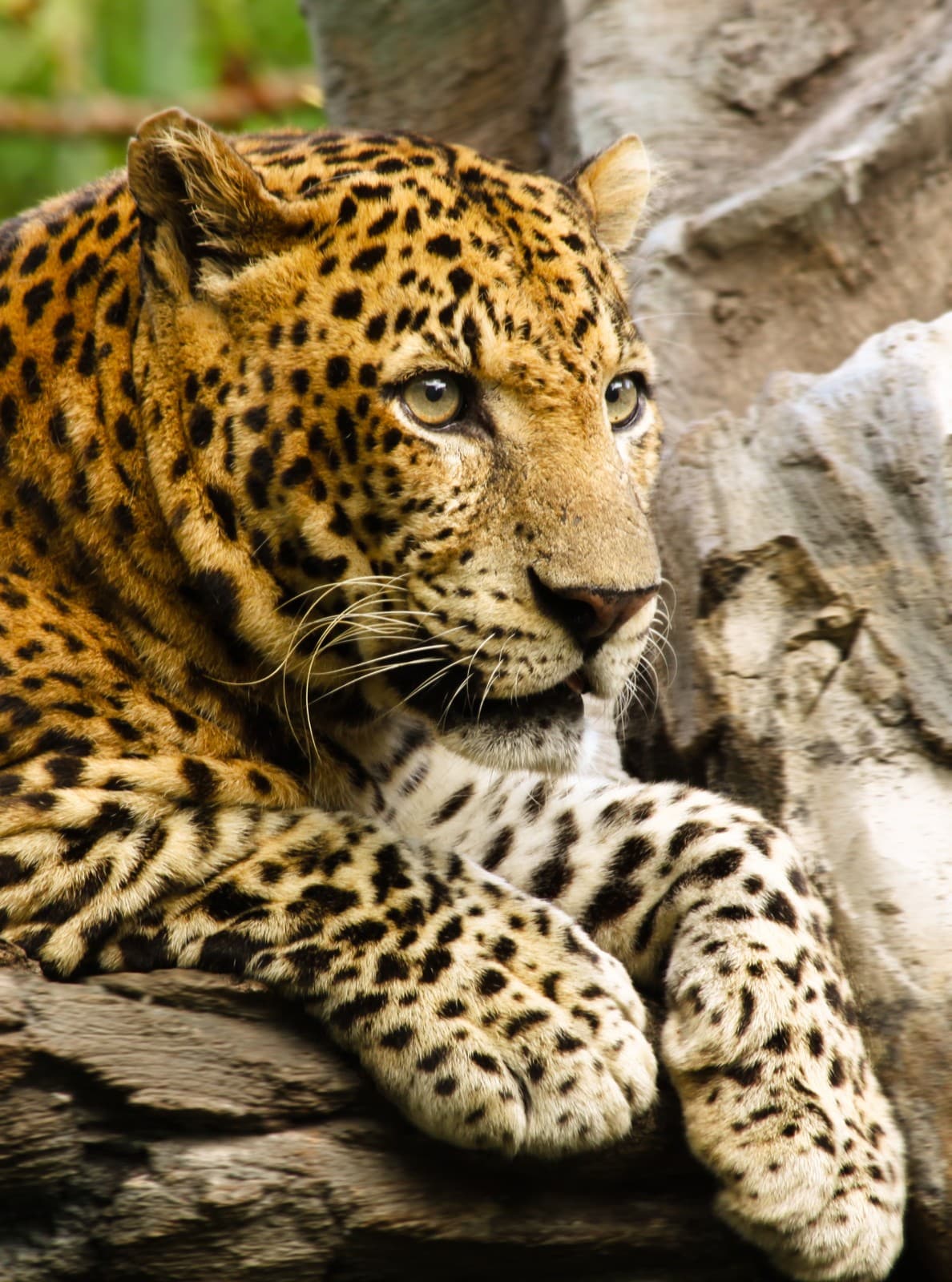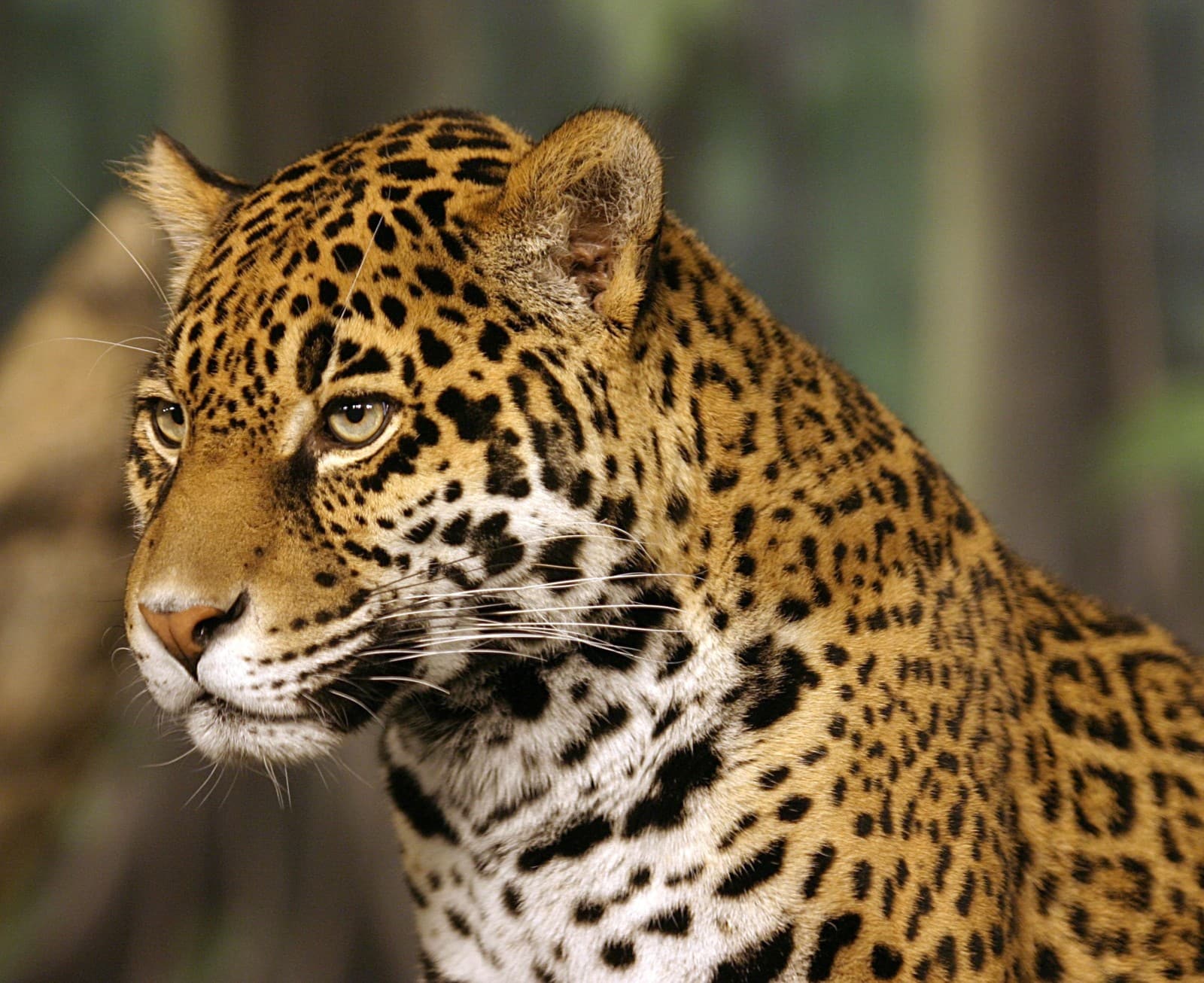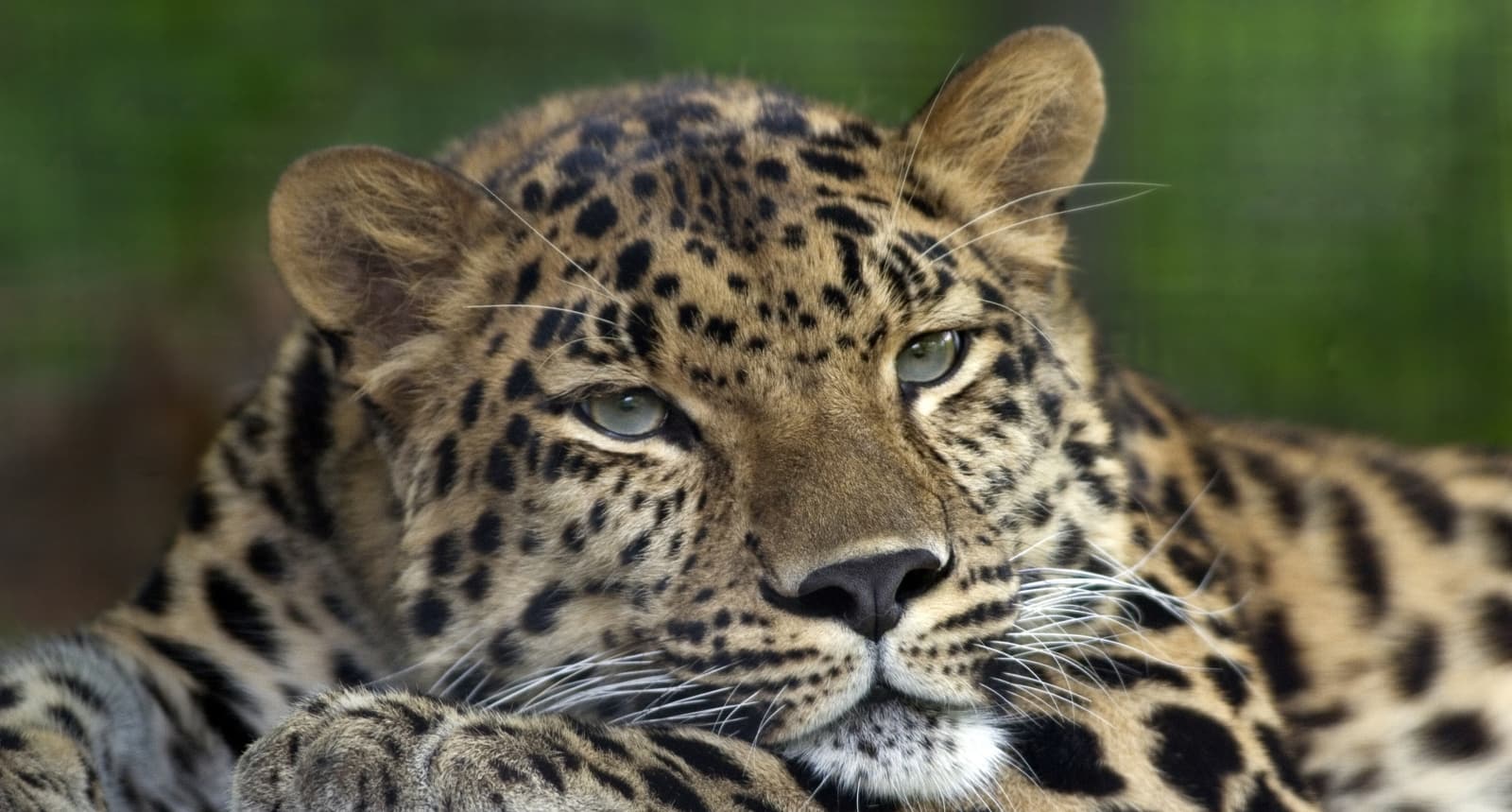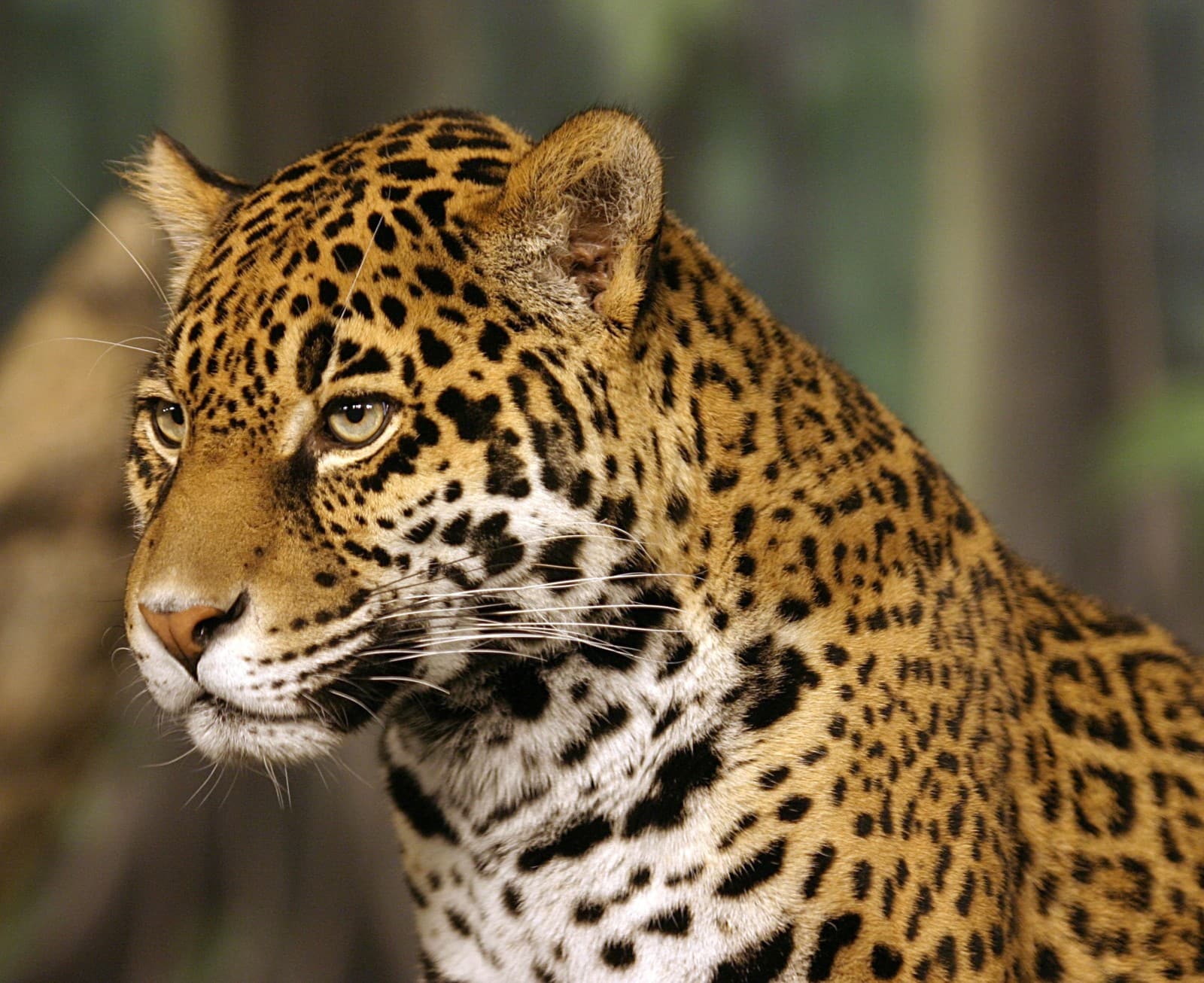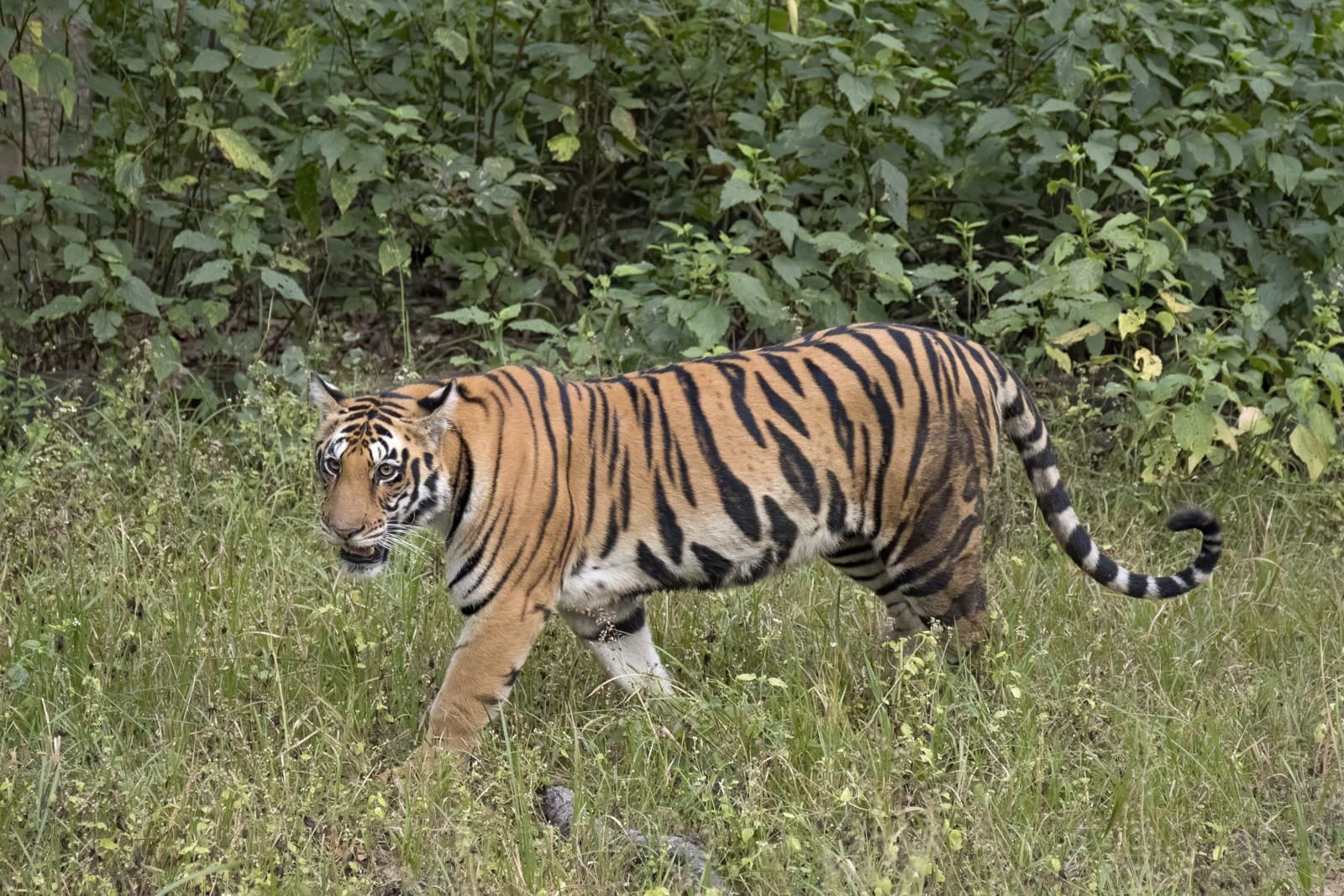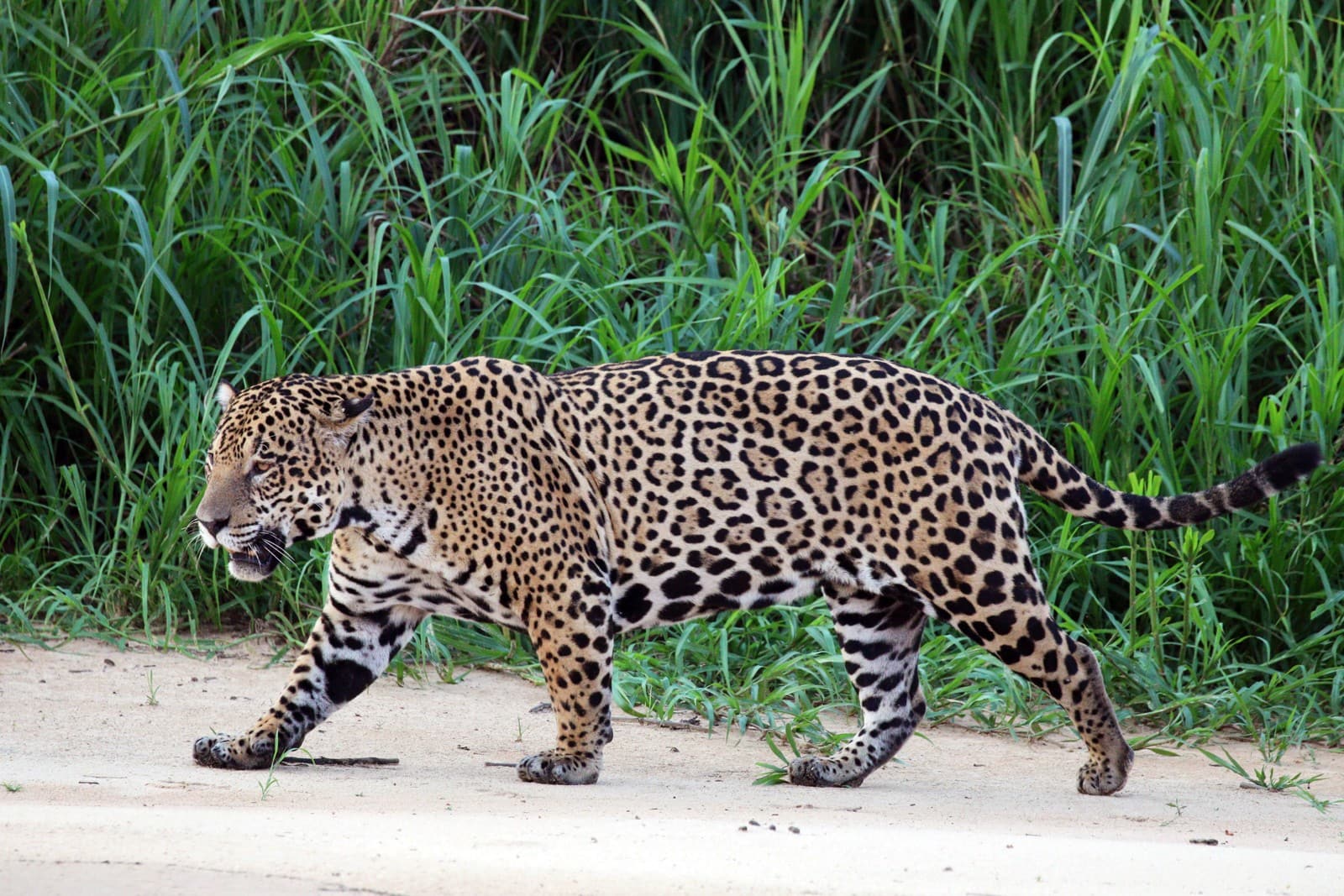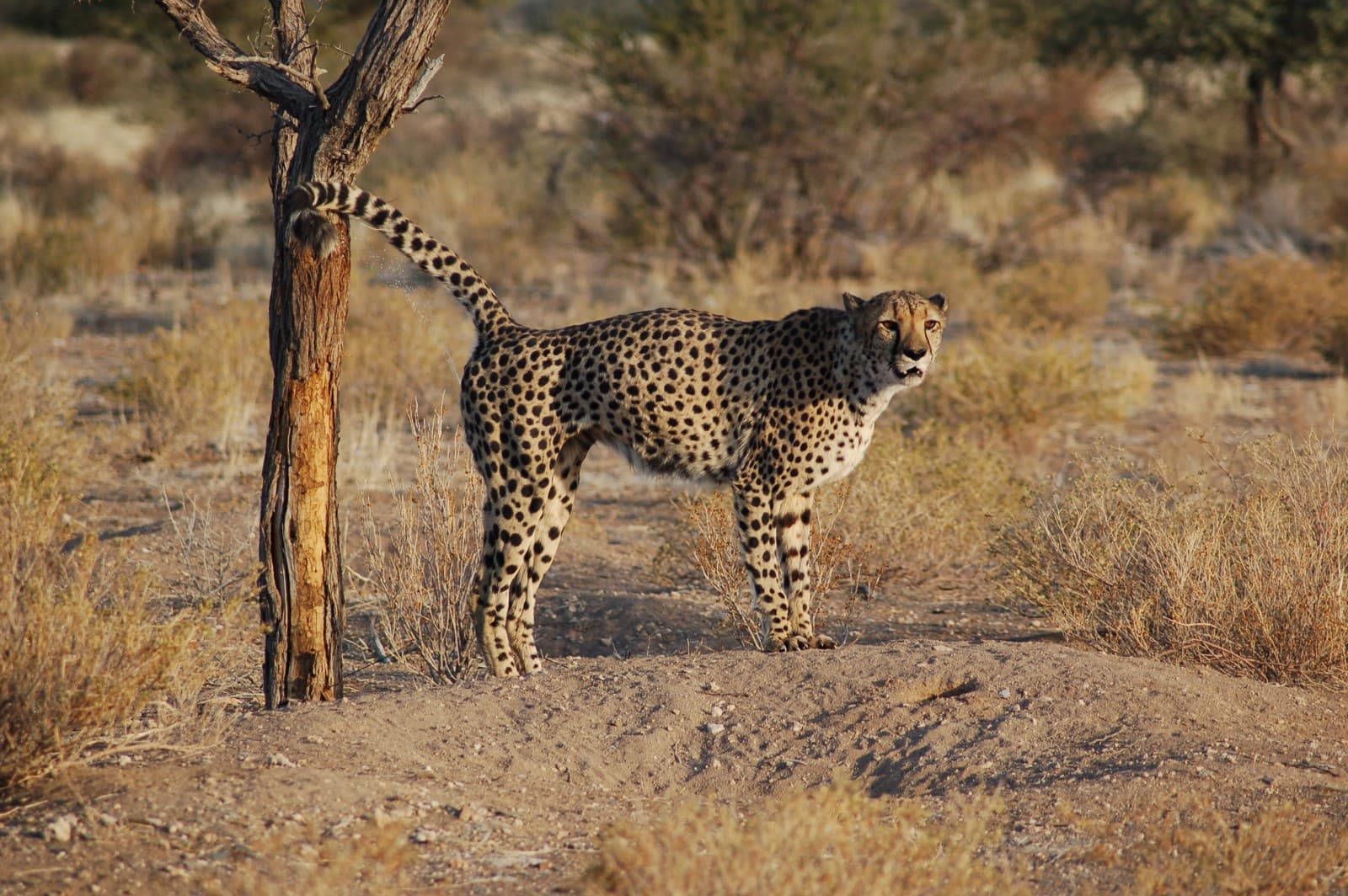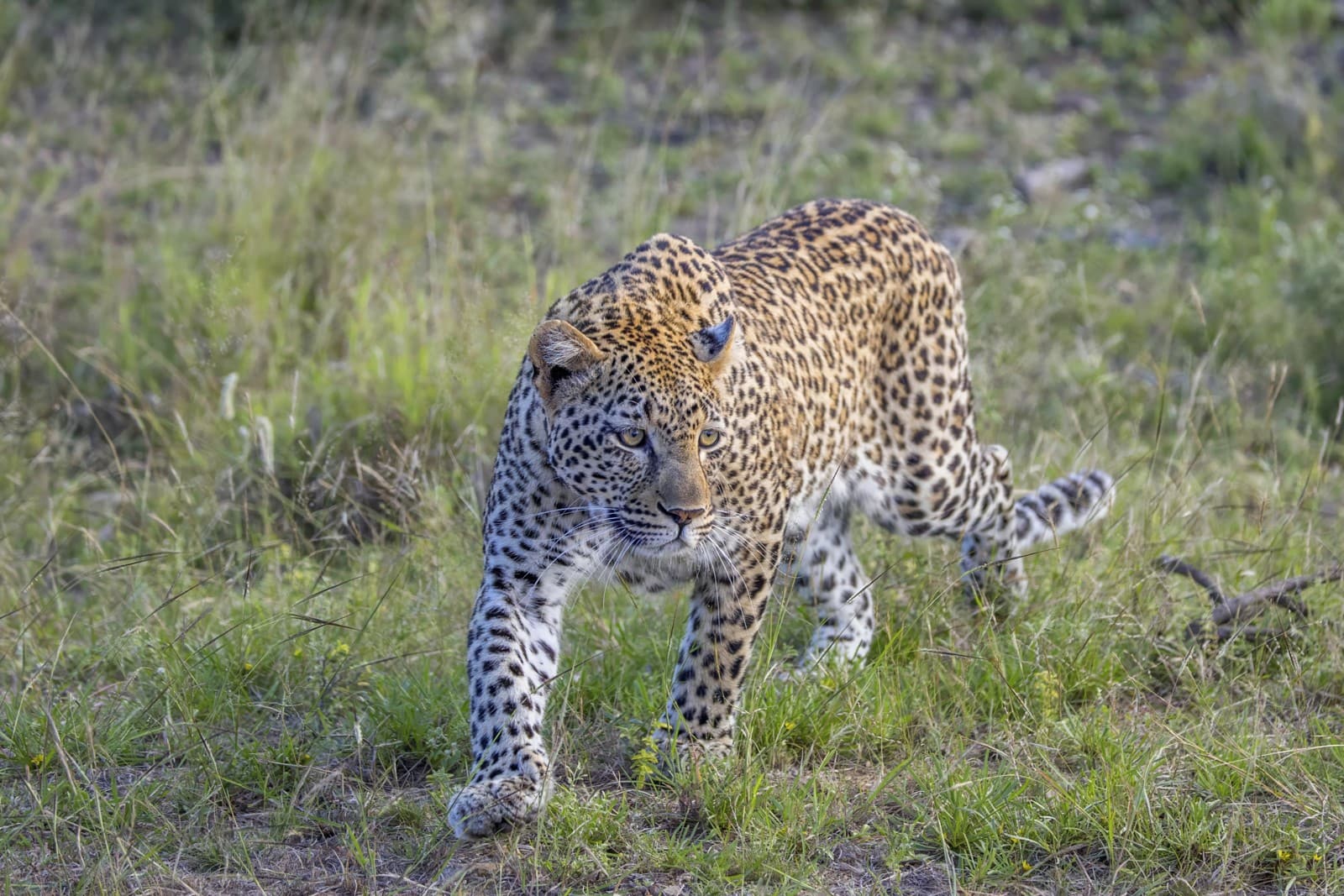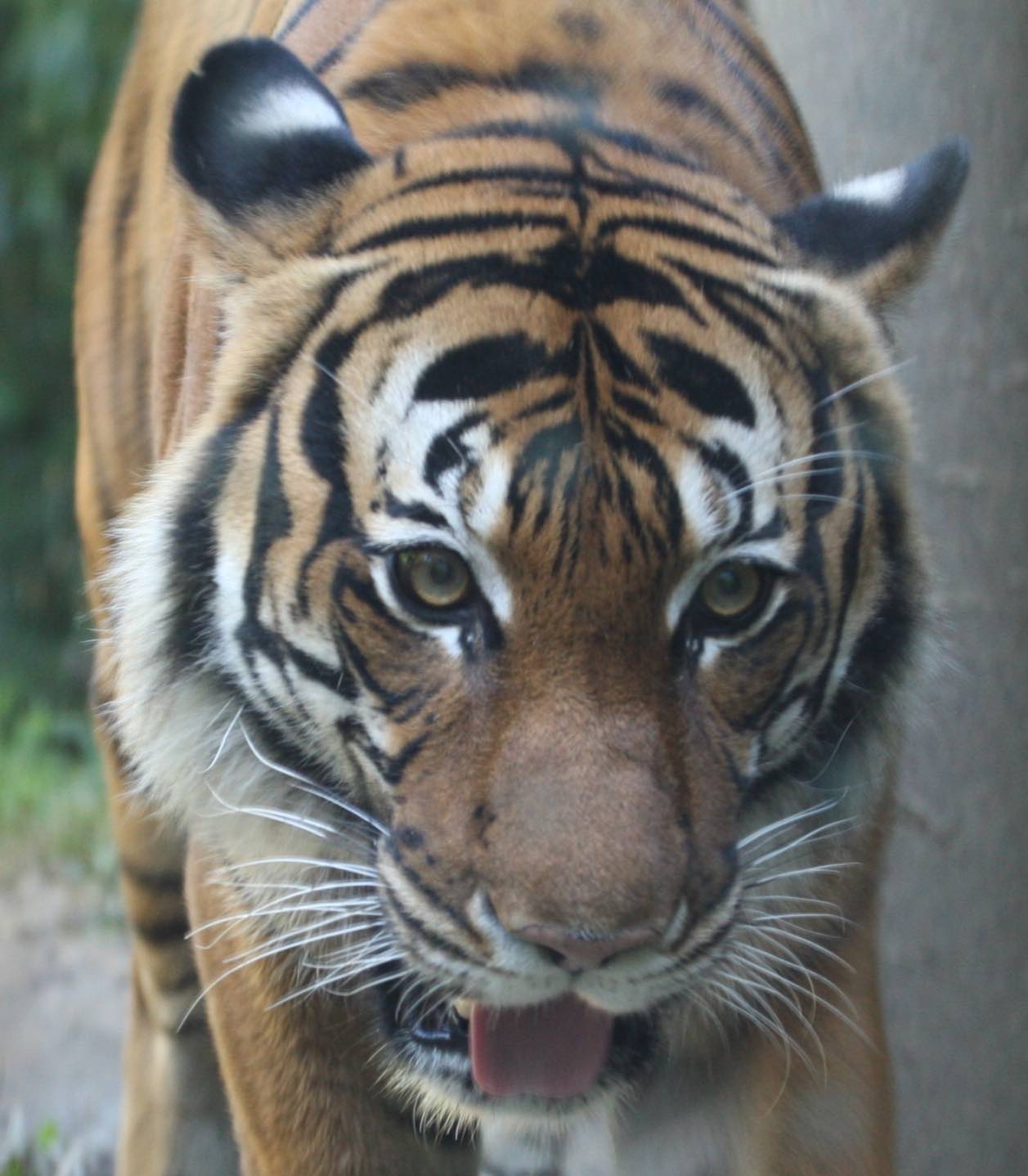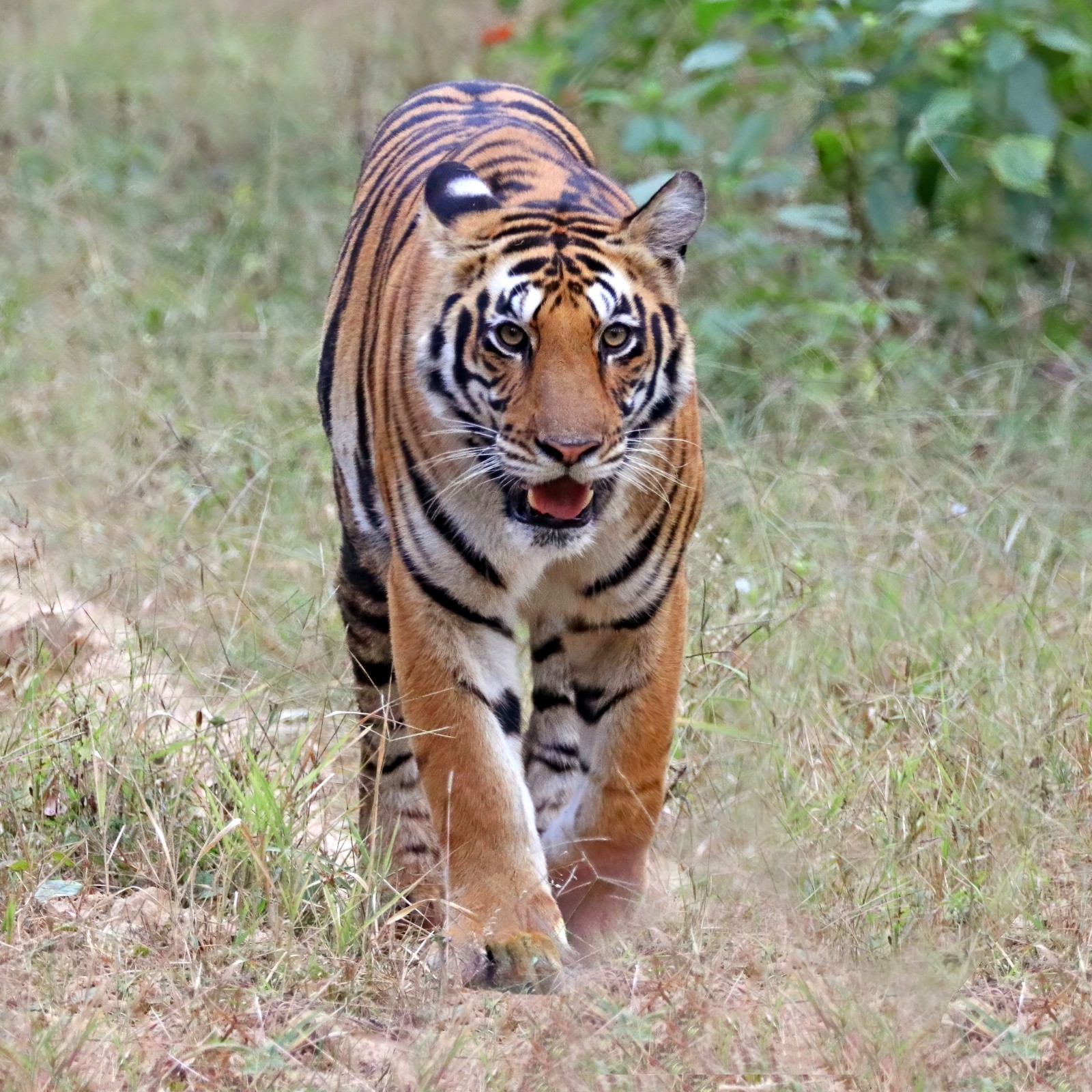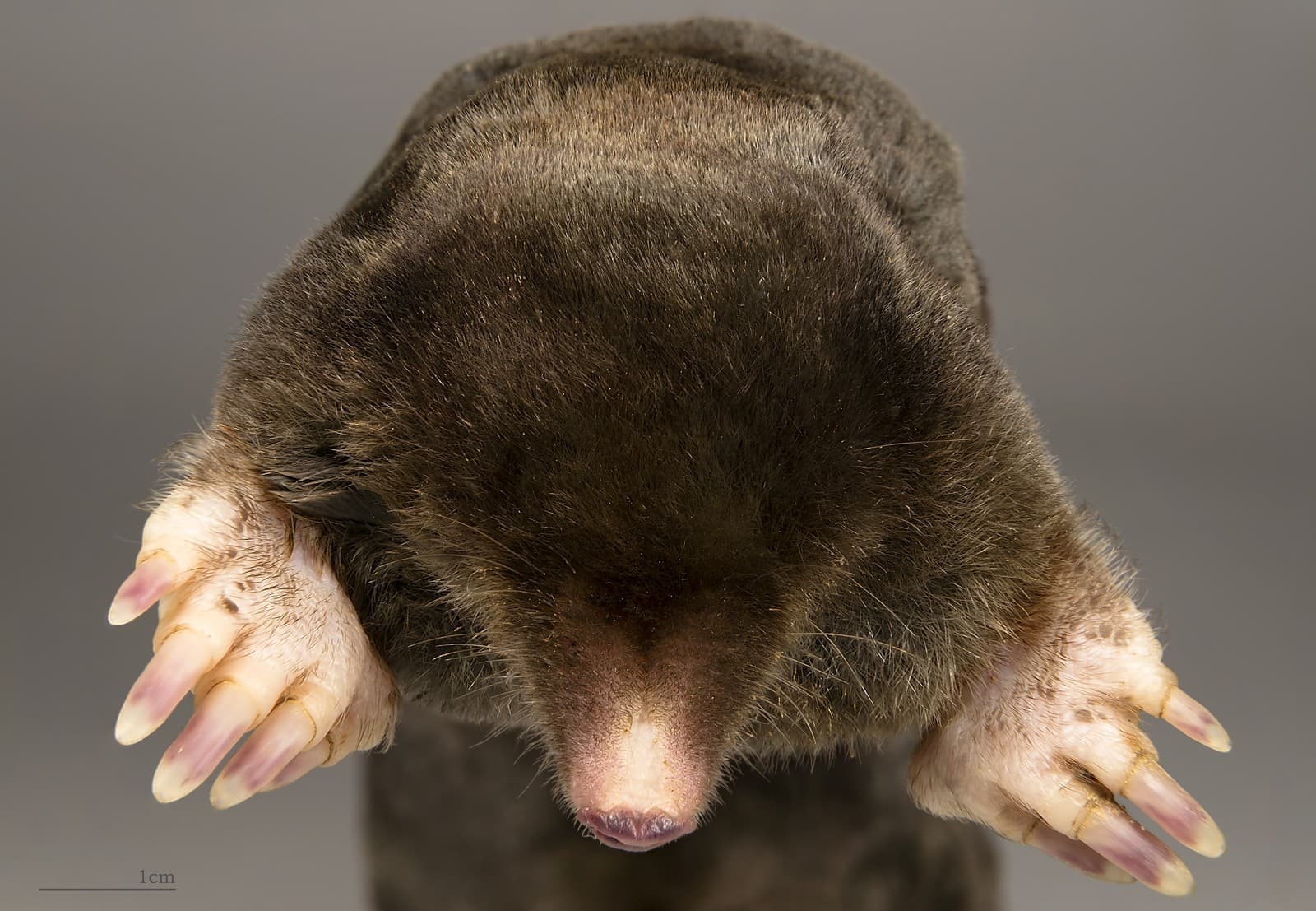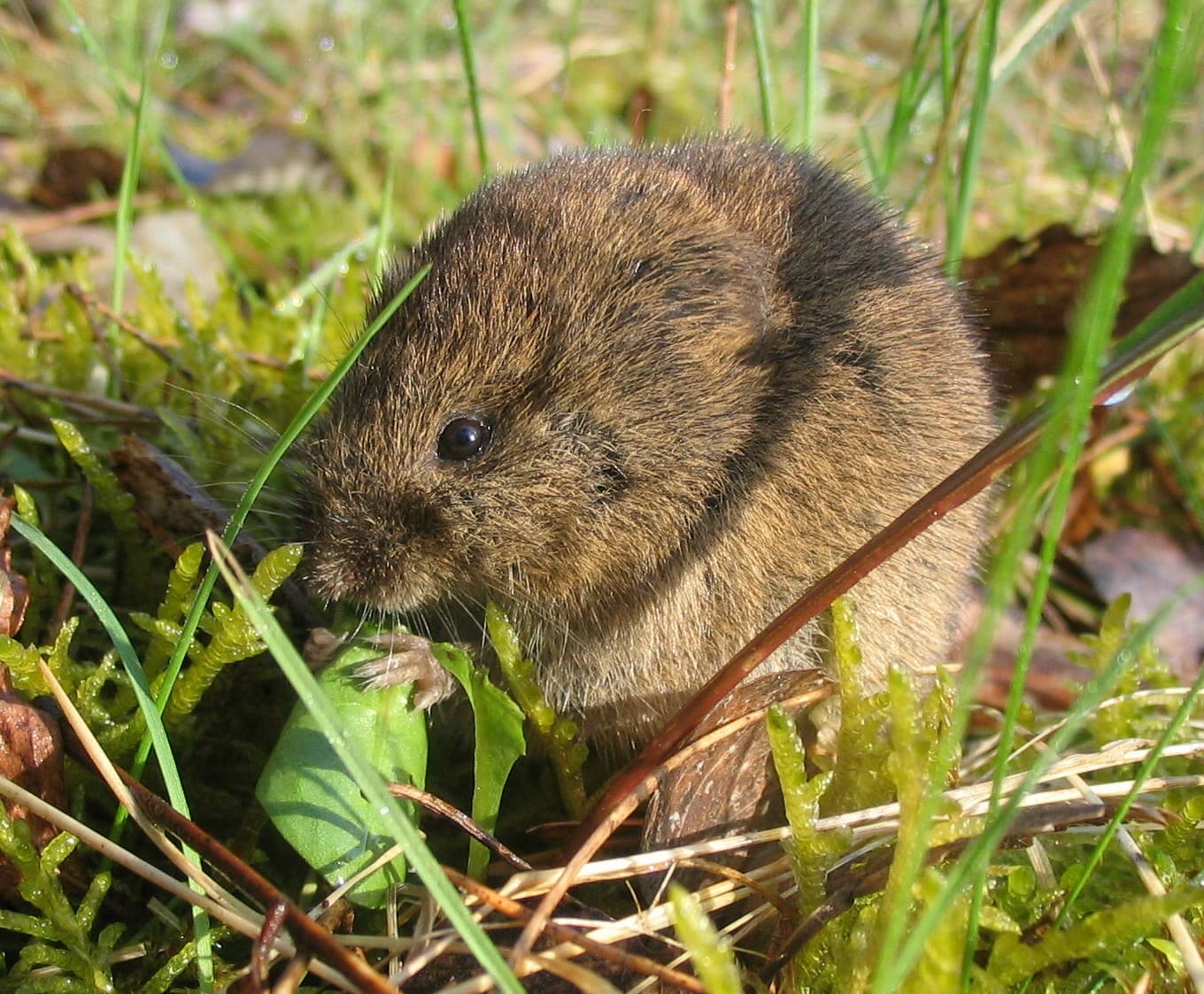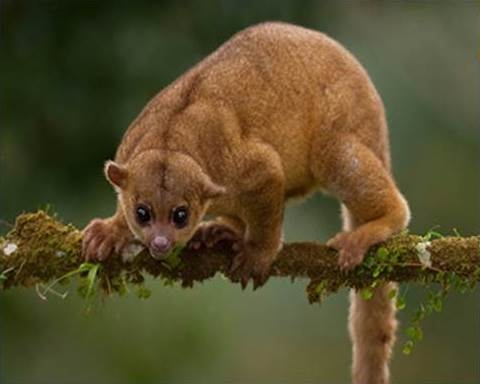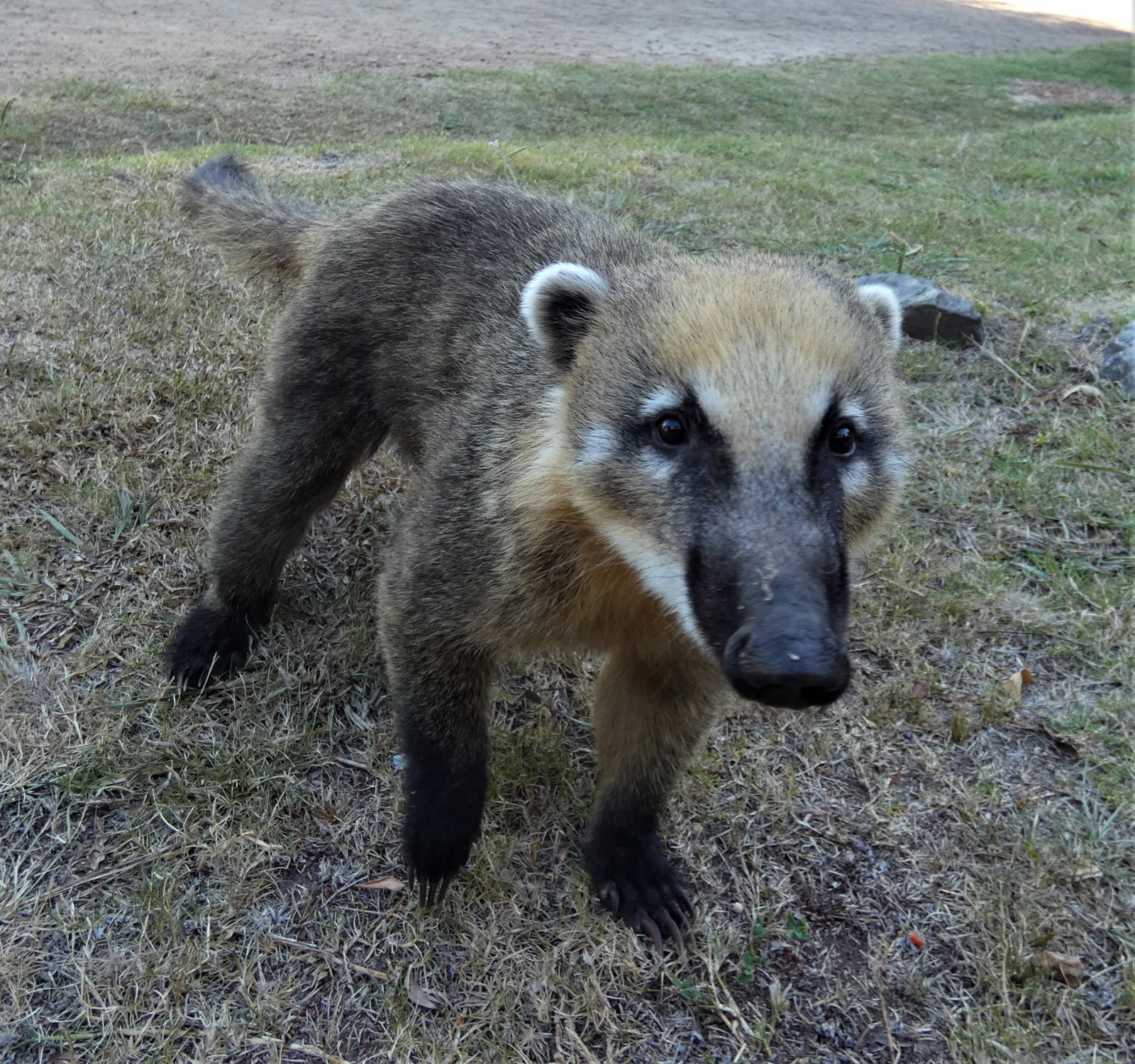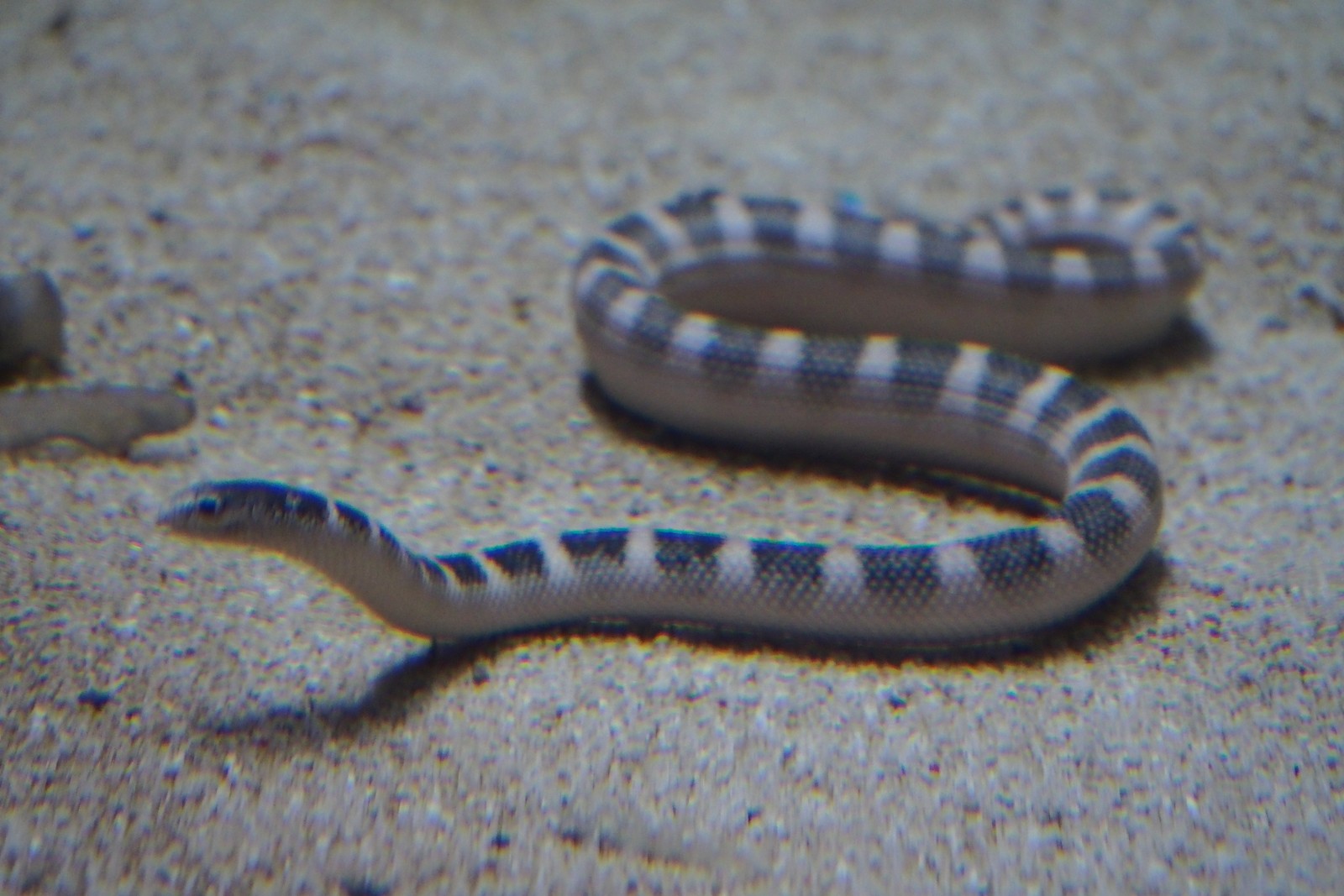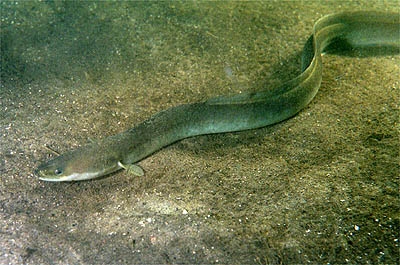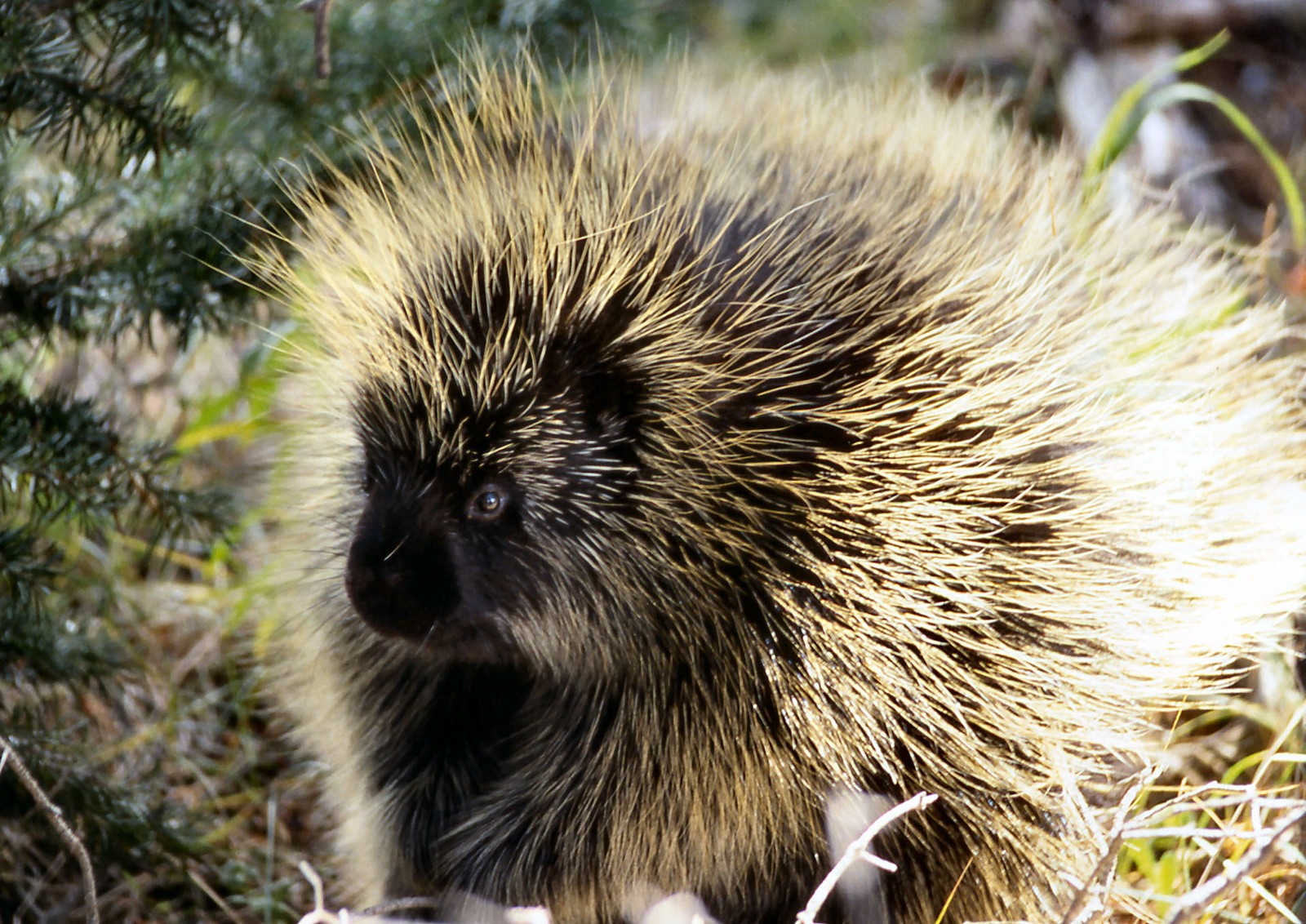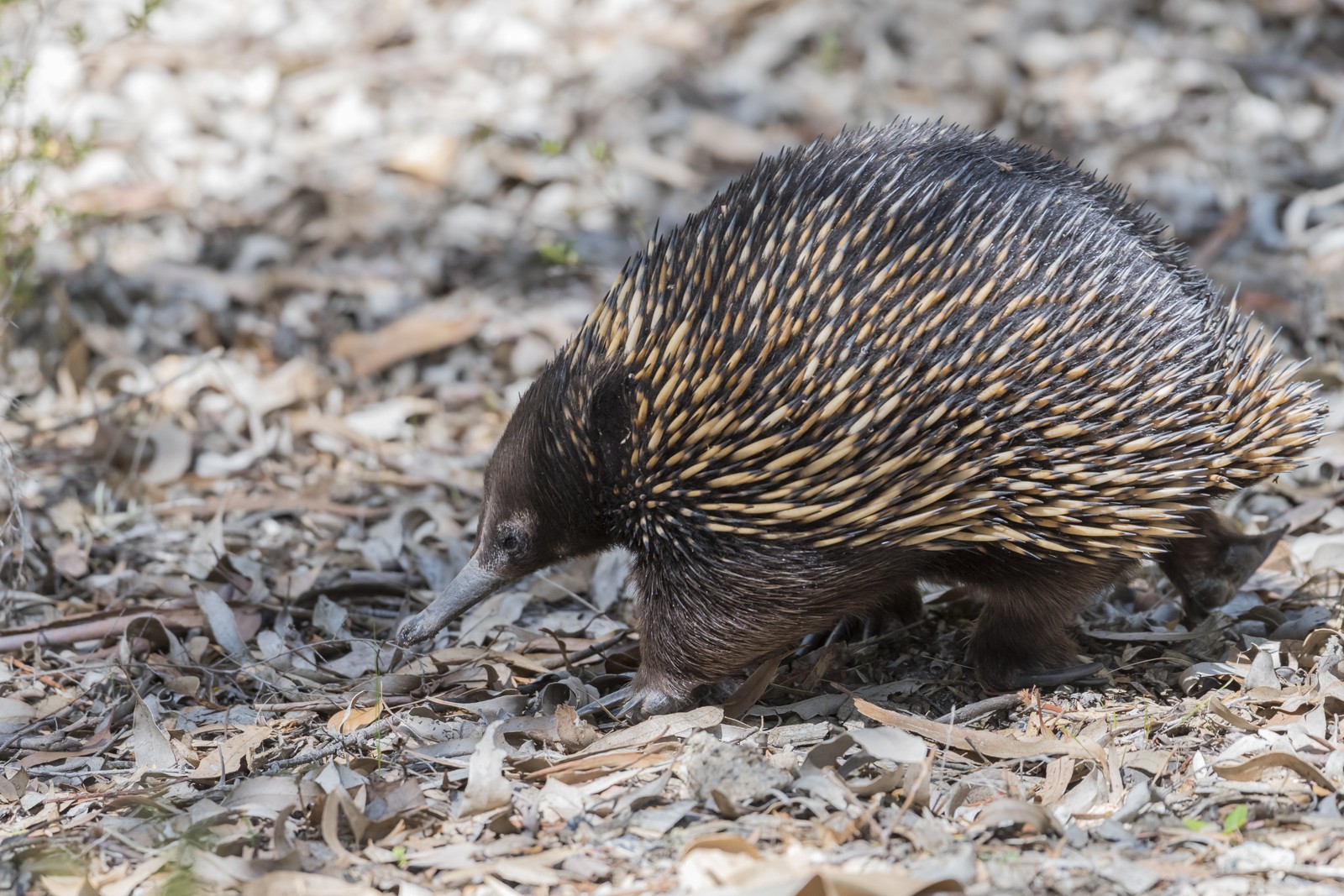Jaguar vs Cheetah: A Complete Comparison
In the realm of big cats, the Jaguar and Cheetah represent two fascinating yet drastically different evolutionary paths. While the Jaguar stands as America’s most powerful big cat, weighing up to 300 pounds (136 kg), the Cheetah has evolved as Africa’s speed specialist, reaching speeds of 70 mph (112 km/h). These remarkable predators showcase nature’s diversity in hunting strategies and physical adaptations.
The key distinction between Jaguar and Cheetah lies in their hunting methods and body structure. Jaguars are built for power, with the strongest bite force of any big cat relative to size, while Cheetahs are designed for pursuit, with a lightweight frame and specialized running adaptations. This fundamental difference shapes everything from their habitat preferences to their daily hunting behaviors.
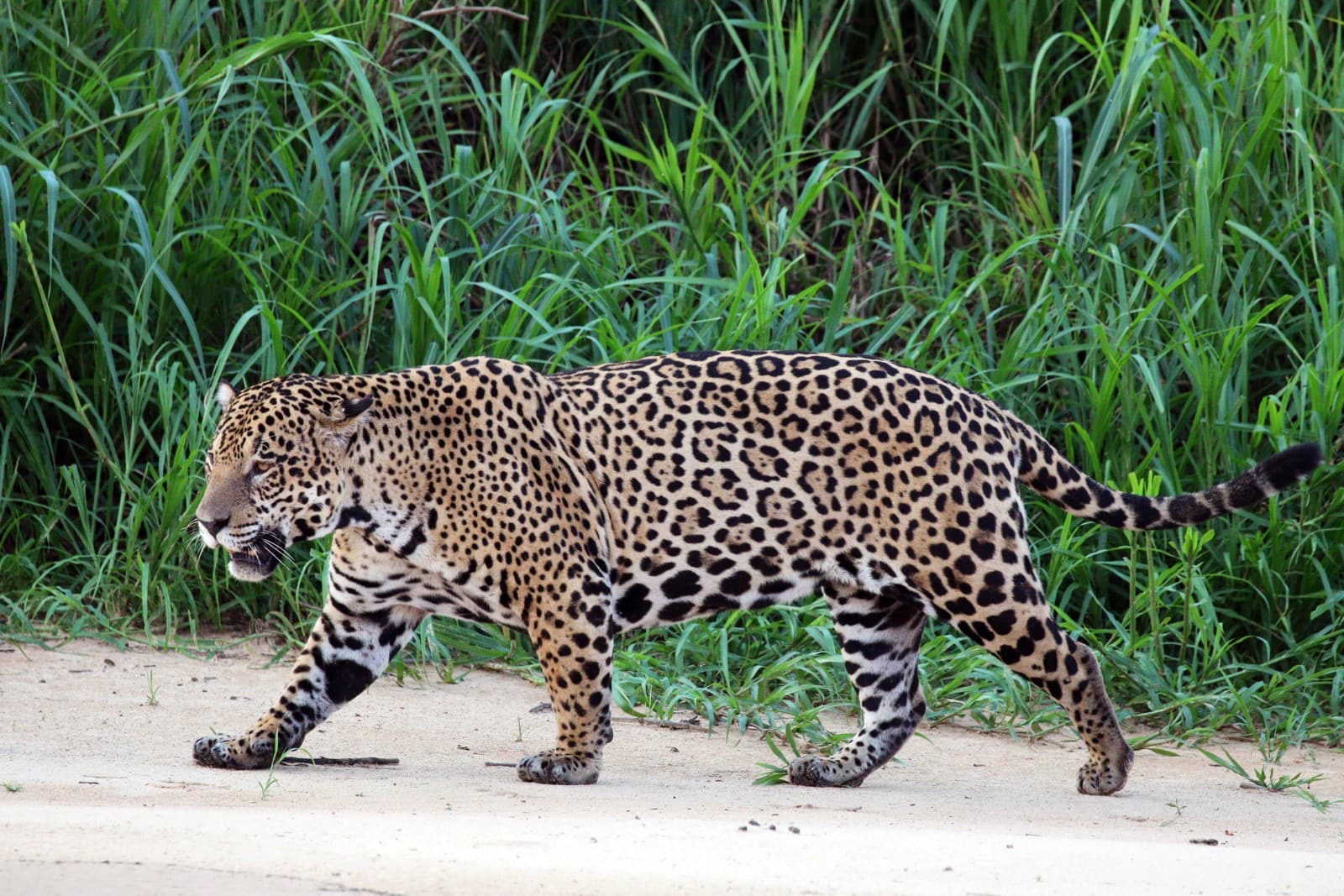
© Charles J. Sharp / CC BY-SA 4.0
The Jaguar’s muscular build and distinctive rosette pattern exemplify the power and stealth needed for ambush hunting in dense rainforest environments.
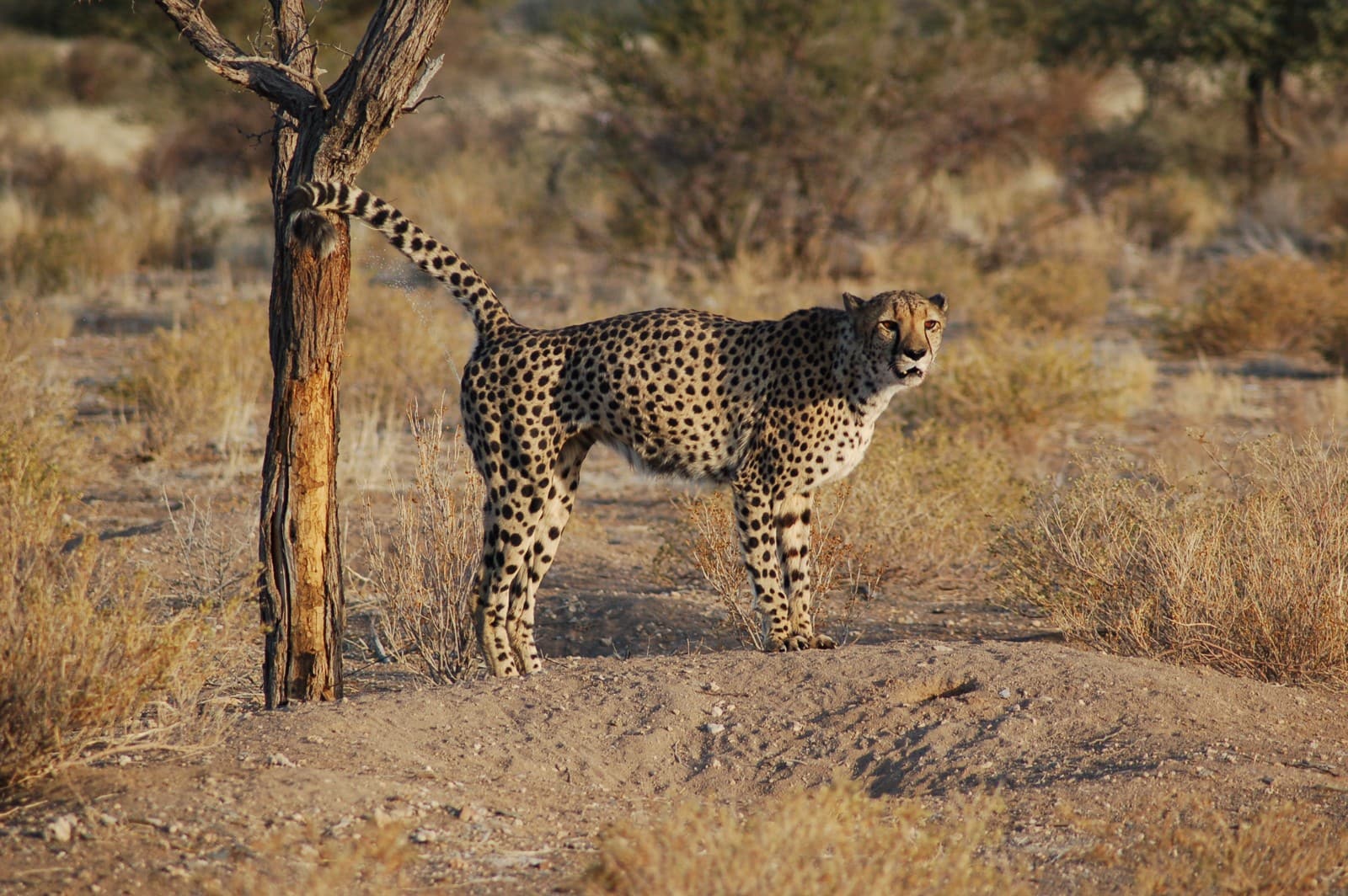
© Joachim Huber / CC BY-SA 2.0
The Cheetah’s sleek, aerodynamic form and simple spotted pattern reflect its evolution as the fastest land animal, perfectly adapted for high-speed pursuits across open savannas.
Physical Characteristics Comparison
| Feature | Jaguar | Cheetah |
|---|---|---|
| Weight | 200-300 lbs (90-136 kg) | 75-140 lbs (34-64 kg) |
| Body Length | 5.5-6.5 ft (1.7-2 m) | 4.5-5.5 ft (1.4-1.7 m) |
| Top Speed | 50 mph (80 km/h) | 70 mph (112 km/h) |
| Bite Force | 2,000 PSI | 475 PSI |
| Habitat | Rainforest & wetlands | Savanna & grasslands |
| Hunting Style | Ambush predator | Pursuit predator |
Hunting Techniques and Prey Selection
Jaguars and Cheetahs employ vastly different hunting strategies shaped by their physical capabilities and environments. Jaguars are ambush hunters, using their incredible strength to crush the skulls of prey with the strongest bite force relative to size of any big cat. They regularly take down large prey like caiman, capybara, and even adult tapirs.
Cheetahs, conversely, rely on their unmatched acceleration and speed to chase down prey in open areas. They primarily target medium-sized antelopes like gazelles and impalas, using their non-retractable claws for traction during high-speed pursuits. Unlike Jaguars, Cheetahs use a suffocation bite to the throat rather than a skull-crushing bite.
Habitat and Distribution
The Jaguar and Cheetah have evolved to dominate completely different ecosystems. Jaguars thrive in the dense rainforests of Central and South America, where their powerful build and excellent swimming abilities allow them to hunt both on land and in water. Their territory once extended from Argentina to the southern United States.
Cheetahs are adapted to the open savannas and grasslands of Africa, with small populations remaining in Iran. Their lightweight frame and exceptional speed are perfectly suited for these wide-open spaces where they can spot prey from a distance and utilize their acceleration advantage.
Who Would Win in a Confrontation?
While such encounters would never occur in nature, analyzing physical capabilities provides insight into these predators’ strengths. A Jaguar’s superior strength, significantly higher bite force, and larger size would give it a decisive advantage in any direct confrontation. At 200-300 pounds (90-136 kg), Jaguars outweigh Cheetahs by nearly double.
However, this comparison misses the point of these cats’ evolutionary specializations. Each species is perfectly adapted for its specific hunting strategy and ecological niche, demonstrating nature’s diverse solutions to the challenge of survival.
Conservation Status and Threats
Both species face significant conservation challenges, though for different reasons. Jaguars are classified as Near Threatened, primarily due to habitat loss and fragmentation in the Amazon rainforest. Their territory has shrunk by more than 50% in the last century.
Cheetahs face an even more precarious situation, listed as Vulnerable with only about 7,100 adults remaining in the wild. Their genetic bottleneck from a near-extinction event 12,000 years ago compounds modern challenges of habitat loss and human conflict.
Understanding these remarkable big cats’ unique adaptations and challenges helps inform conservation efforts to ensure their survival for future generations. While the Jaguar vs Cheetah comparison reveals fascinating differences, it also highlights the importance of preserving the diverse ecosystems that allow such specialized predators to thrive.
